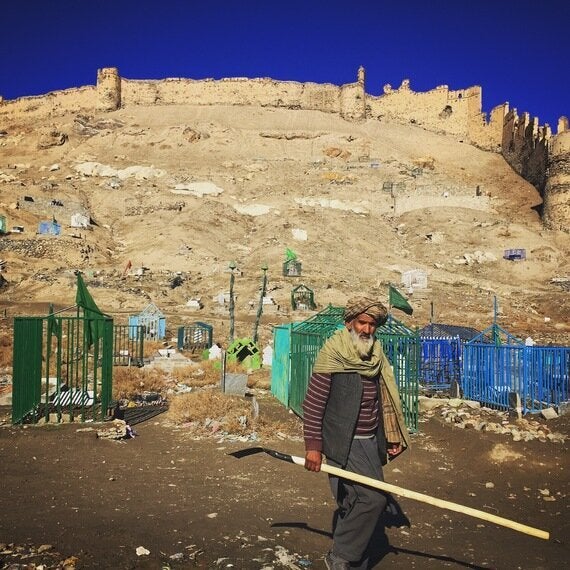
The Foreign and Commonwealth Office warns against all travel to Afghanistan, describing it as unpredictable, affected by conflict and extremely volatile. Earlier this month, I had to be in Kabul because of BAAG business and also because my parents live there. I had to arrange a hefty travel insurance, at an inflated price because of the FCO's travel advice.
The overall message the FCO sends is strikingly clear: avoid Afghanistan. And that is exactly what many Afghans are doing, fleeing their country in unprecedented numbers. A combination of insecurity and a severely depressed economy has meant that civilians deaths are routine, jobs are scarce and internal displacement is widespread. As a sad example, the Taliban attacks in the heart of Kabul this week killed at least 64 and wounded 347 mostly civilians.
It should be no surprise that Afghans make up the second largest group of people trying to reach Europe to claim asylum: 213,000 Afghans arrived there last year. Additionally, internally displaced people are increasing, as many Afghans from provinces ridden with conflict and unemployment are forced to abandon their homes.
But many others, living in areas that are relatively safe, choose to stay. Choice is the crucial word here.
On a recent trip to Mazar-e-Sharif, in northern Afghanistan, I was surprised to find how the city had developed since my last visit in 2009. The scars of war were hardly visible among the new shopping centres, townships and the long asphalted roads. Though, an obvious exception was the burnt down Attorney General's office that came under Taliban attack last year. Nonetheless, a sense of stability cocooned the city that was absent in most parts of the country, a sense that reassured people into staying.
Consistent international support could provide the same to other regions in Afghanistan. If there is an improved level of stability in the country, more Afghans will return and remain as they did in the years between 2002 and 2010. They would have no need or desire to undertake the perilous journey to Europe, risking their lives.
The majority of international spending and investment in Afghanistan had been military spending. Civilian aid is insignificant in comparison. A 2011 study by the Global Humanitarian Assistance shows that civilian aid during 2002-09 was only 9.3 per cent of the overall international assistance, whereas military aid was 84.8 per cent. But as most international troops withdrew in 2014, military spending ground to a halt. And the Afghan economy, dependent on such spending, is left decimated.
Rescuing the Afghan economy is important. When jobs are scarce and incomes pitifully low, people's life choices are massively reduced. If a family's survival is at risk, hideous decisions may eventually have to be faced, such as leaving the country or engaging in criminal or terrorist activities.
According to Afghanistan's Central Statistics Organisation, the unemployment rate in Afghanistan has spiked to about 40 per cent. This doesn't include those 'lucky' enough to be in severely underpaid jobs.
European donors are considering decreasing aid to use part of that money to support refugees arriving in their own countries. The result of this could be disastrous, as the root causes forcing hundreds of thousands of people to leave their homes would remain ignored. Without support, the security and economic situations will continue to decline.
Aid must fund projects that are based on the needs of Afghans and are delivered efficiently to them. The Afghan government has led many successful national projects with the assistance of donors. Examples include the National Solidarity Programme and the Basic Health Services Package. Aid has also tackled humanitarian issues such as conflict-induced displacement, natural disasters and acute food shortages. All these efforts have saved lives and created some stability in various regions.
Sufficient aid to Afghanistan can create jobs, improve livelihoods and decrease poverty, thus creating some stability in an increasingly insecure region.
In the long run, the Afghan government and private sector will need to serve Afghans. The government has embarked on a plan of 'realising self-reliance'. But given the current poor security, governance and infrastructure, it will likely take decades before the country can fully meet its people's needs. The undeniable truth remains that Afghanistan will need long term and steady international assistance.
In Afghanistan, dying is easy, staying is hard but not impossible. We should support those Afghans who have chosen this difficult path. Instead of throwing up their hands in fury at Afghan refugees arriving in Europe, international donors should be helping Afghans build a more secure and stable Afghanistan. Instead of cutting aid, it must be improved and increased.